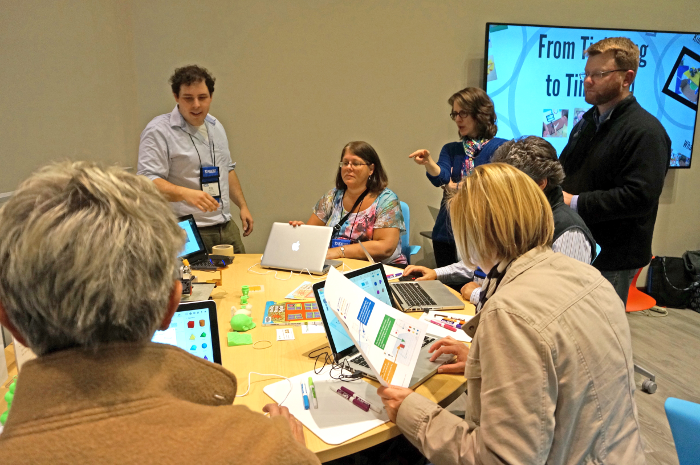
Jacy Edelman, Kreg Hanning & Sue Cusack
October 21, 2015
Kinetic Sculpture:
|
Stop Motion:
|
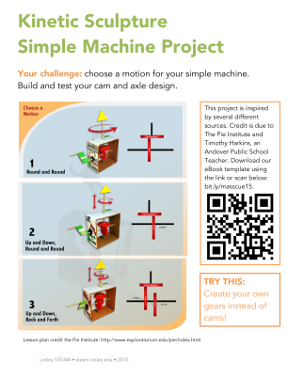 |
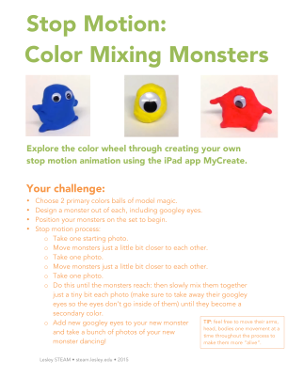 |
Tinkercad: Dream Houses |
Draw bots |
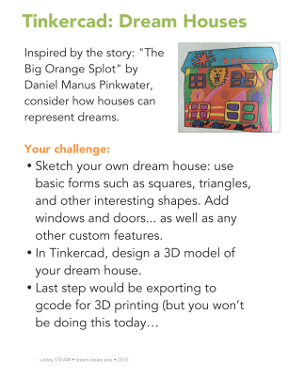 |
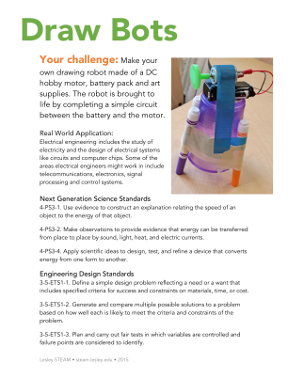 |
Three third and fourth grade students from the Kennedy-Longfellow School spent a Saturday in early June participating in the Boston Public Schools (BPS) Robotics Olympics. Not only were they amongst the youngest students there, they were also honored to be the only team representing the Cambridge Public Schools.
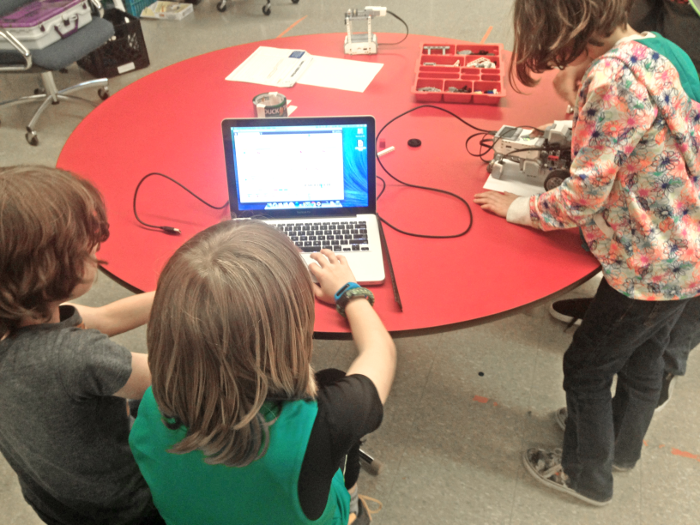
Continue reading K-Lo team competes at BPS Robotics Olympics
On May 21st, over 150 Cambridge Public Schools (CPS) families and students converged in the Kennedy-Longfellow School (K-Lo) dining hall for an evening of creative robotics, prizes, and pizza. K-Lo hosted the first ever CPSD “Robotics Playground” with the idea of sharing out classroom robotics and engineering curricula. K-Lo was in good company — with teacher and student teams from the high school, Amigos, Fletcher Maynard, King Open, Tobin, 8 middle school volunteers from Putnam Ave, and Ingrid Gustafson, who represents all of the middle schools.

We had a host of special guests, including Superintendent Young and Assistant Superintend MaryAnn MacDonald, two school committee representatives, Fred Fantini and Patty Nolan, Terry Gist, President of the Cambridge Education Association, a representative from the City Councilor Nadeem Mazen’s office, reps from the Best Practices group in the STEAM initiative being coordinated through City Hall, a representative from the Cambridge Expanded Learning STEAM Network, the director of the Elementary Education program at Lesley University, and 4 parent representatives from the KLO Site Council.
Fi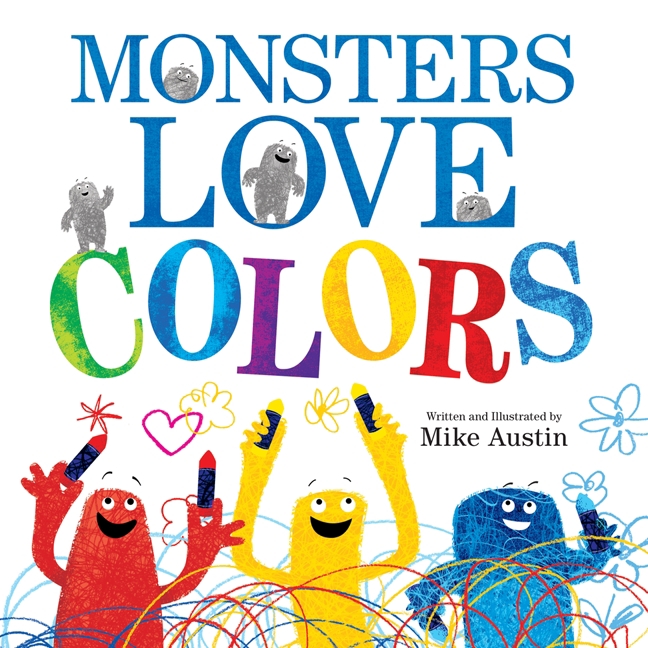 rst grade students explored color mixing in art class by creating their own stop motion animation videos. The stop motion center was just one of six centers set up by K-Lo art teacher Amanda Kilton. The other centers included an overhead projector color transparencies, stamp mixing, tissue paper collage, painting and a color-based book browsing table with titles like “Monsters Love Colors.”
rst grade students explored color mixing in art class by creating their own stop motion animation videos. The stop motion center was just one of six centers set up by K-Lo art teacher Amanda Kilton. The other centers included an overhead projector color transparencies, stamp mixing, tissue paper collage, painting and a color-based book browsing table with titles like “Monsters Love Colors.”
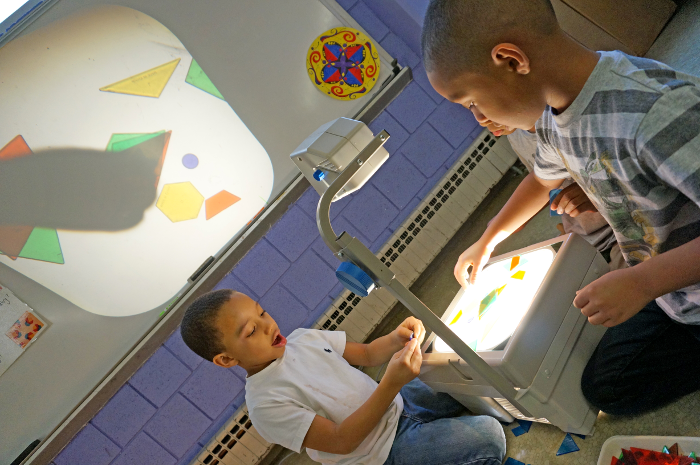
The Kinetic Sculpture/Simple Machines has been a project-based collaboration between the 5th grade classroom teachers, the art teacher, the Library/Media Specialist and the technology teacher. The project began by the classroom teacher introducing the concept of simple machines during homeroom science blocks. Students documented and explained every day simple machines found in the kitchen: a can opener, knife, pizza cutter, etc. Teachers also set up an engineer “gallery walk” where students walked around the school makerspace and read about over 20 types of engineers. They were then tasked with finding two types of engineering they were interested in and explaining their interest.
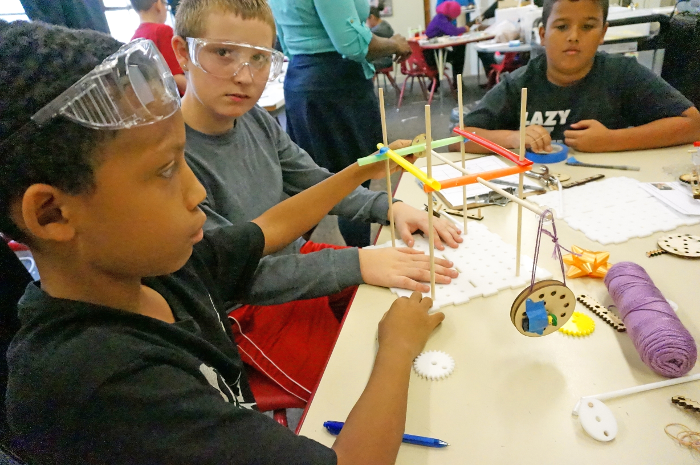
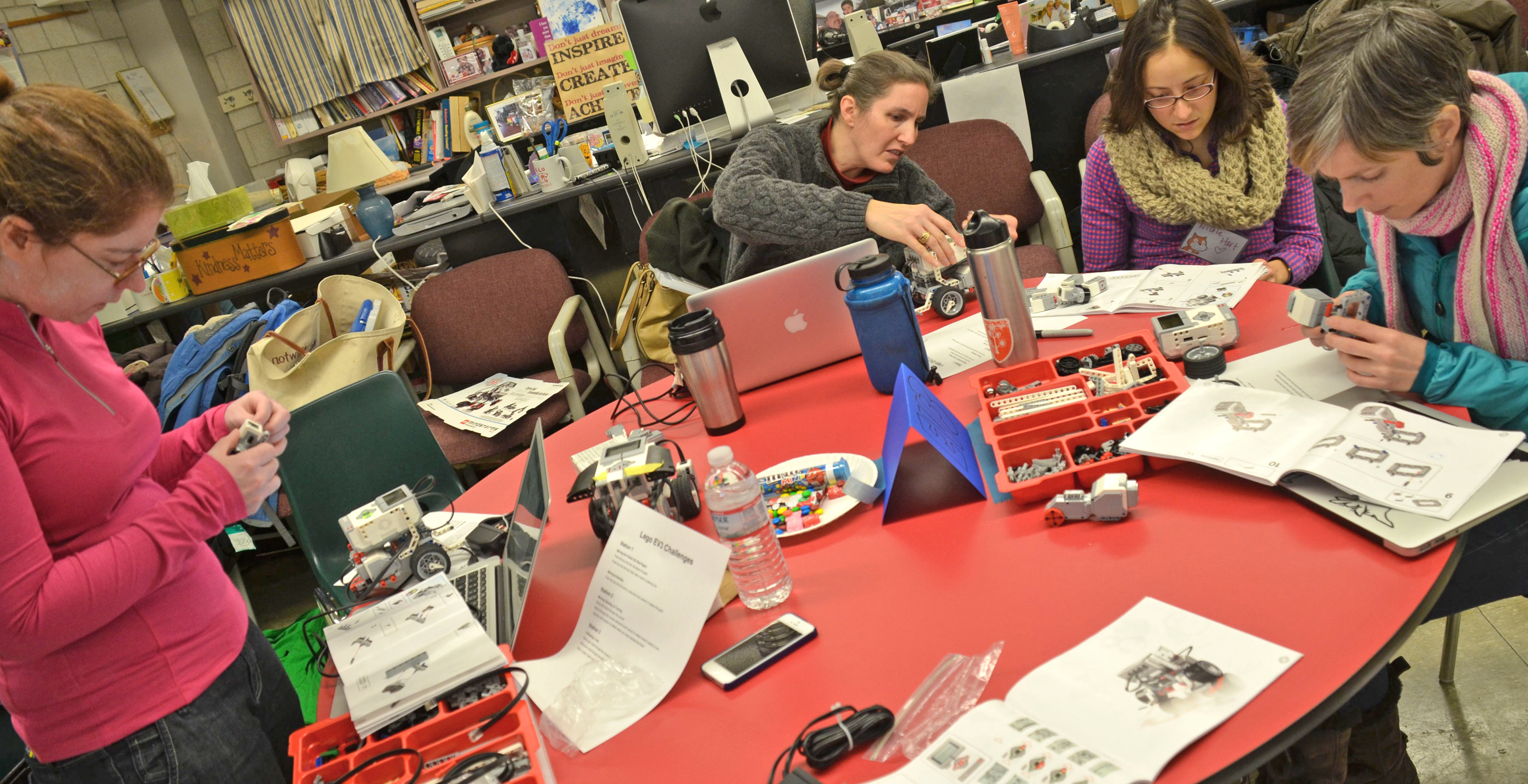
Last Monday, one of Amy Moylan’s first grade parents came into her classroom to share her daughter’s excitement that “her teacher is going to robot school” and that the little girl couldn’t wait to use the robots in her classroom. Ms. Moylan, who teaches at the Amigos School, was one of 20 Cambridge Public School District (CPSD) teachers and specialists taking the “Make It Take It” robotics course facilitated by the Lesley team and CPSD Instructional Technology Specialist guru Ingrid Gustafson. The idea behind the class is that each Cambridge school was offered robotics kits with the intent of bringing robotics and programming into the classrooms. The workshop was taught in the Kennedy-Longfellow School (K-Lo) makerspace over the course of several days.
Above: The 4th grade students became programming mentors, helping to guide Kindergarteners through exploring Scratch Jr.
Students at the Kennedy-Longfellow School didn’t just spent one hour coding for the National Hour of Code Week: they spent 31 hours of collective coding! All grade levels, including preschool and Special Start students up through 5th grade, were invited into the school makerspace during the week to participate in hands-on coding activities. Following our model of student-centered learning, we set up various centers, depending on the age range, and let the students free to explore!
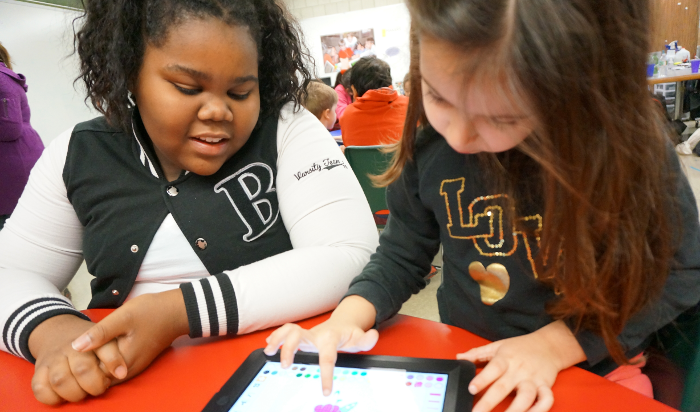 Above: a 5th grade coder mentors a 1st grader using Scratch Jr.
Above: a 5th grade coder mentors a 1st grader using Scratch Jr.
A group of nine Kennedy-Longfellow students spent a weekend in November coding as part of the first ever Boston-based “Girls Who Make Games” workshops at MIT. These students immersed themselves in game design, art, and programming using software called Stencyl.
Not only did they get to network with other local girls who code, they were mentored by local professional developers. We sat down with these students and asked them to share their thoughts on what makes them tick as programmers at K-Lo, and beyond. To view the video, click here.
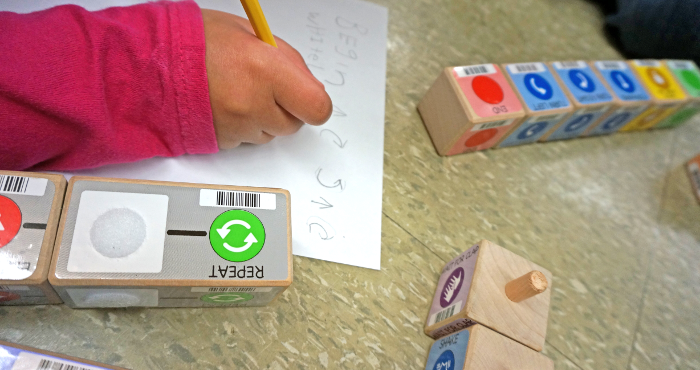
This fall, K-Lo launched robotics in the primary grades in partnership with Tufts University’s Eliot Pearson Department of Child Study and Human Development. The school piloted the KIBO, a robot designed with support from the National Science Foundation, with one kindergarten, first, and second grade class. During the seven week project, students learned about programming, sensors, and the engineering design process with ties to readers theatre in the kindergarten, and earth science in the first and second grades.
The Lesley team will continue to support the other primary classrooms in learning about the KIBO and how it can be used to deepen understanding and engagement in other curricular activities. To see more about the KIBO, you can see the company discussion of this innovation, and stay tuned to hear more from K-Lo students about their own experiences with robotics!
Check out a couple videos of students presenting their final projects:
Meet KLO’s first paperless classroom! Karla Anderson’s 4th grade class has jumped into the paperless fray with digital notebooks for science and math. Ms. Anderson walked the class through setting up individualized math and science notebooks in the Notability app. Notability was chosen over other apps because of the following features:
To share assignments with students, Ms. Anderson simply places a worksheet in a Google docs folder shared with all of her students. Students log into the Google Drive app on their iPads and open the worksheet right into Notability, where they can either type or draw their answers. When finished with the assignment, they “share” the worksheet back into their Google Drive so Ms. Anderson can review, comment and grade the work.
The app Book Creator has long been a favorite KLO app for students to create their own eBooks. Ms. Anderson has found an innovative use for it thanks to Tim Harkins (@mrtharkins), 2nd grade teacher at West Elementary School in Andover, MA, who presented his science eBook idea at the 2013 fall MassCUE Conference. Ms. Anderson has created eBook “texts” for each science curriculum unit. The eBooks are shared out with students via Google Drive. Each student then brings the ePub into Book Creator on their iPad and plug in their answers, photos and videos as the unit progresses. Each text also included pre and post assessments so that students and teacher could see the measure of student growth nested conveniently among the content.
We asked two students to share their experience using the eBook texts as well as to give a brief tutorial on how to use the Notability and Book Creator apps:
Ms. Anderson will then take you deep into her Google Drive process to demonstrate her paperless workflow: